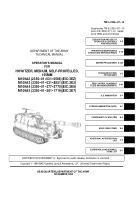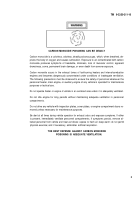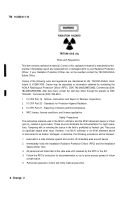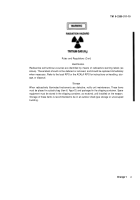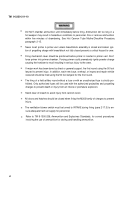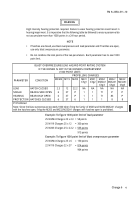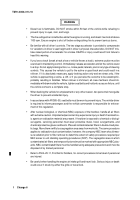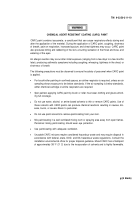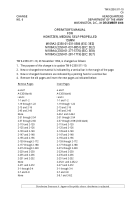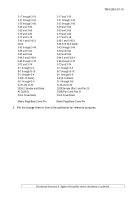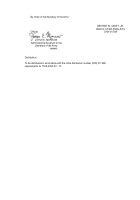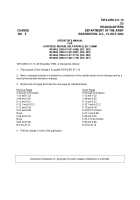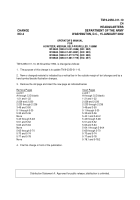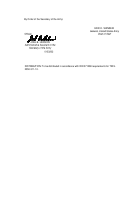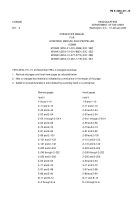TM-9-2350-311-10 - Page 9 of 775
TM 9-2350-311-10
CHEMICAL AGENT RESISTANT COATING (CARC) PAINT
CARC paint contains isocyanate, a constituent that can cause respiratory effects during and
after the application of the material. During the application of CARC paint, coughing, shortness
of breath, pain on respiration, increased sputum, and chest tightness may occur. CARC paint
also produces itching and reddening of the skin, a burning sensation of the throat and nose, and
watering of the eyes.
An allergic reaction may occur after initial exposure (ranging from a few days to a few months
later), producing asthmatic symptoms including coughing, wheezing, tightness in the chest, or
shortness of breath.
The following precautions must be observed to ensure the safety of personnel when CARC paint
is applied.
●
●
●
●
●
●
●
For brush/roller painting in confined spaces, an airline respirator is required, unless an air
sampling shows exposure to be below standards. If the air sampling is below standards,
either chemical cartridge or airline respirators are required.
Spot painters applying CARC paint by brush or roller must wear clothing and gloves afford-
ing full coverage.
Do not use water, alcohol, or amine based solvents to thin or remove CARC paints. Use of
these solvents with CARC paints can produce chemical reactions resulting in nausea, dis-
ease, burns, or severe illness to personnel.
Do not use paint solvents to remove paint/coating from your skin.
Mix paint/coating in a well ventilated mixing room or spraying area away from open flames.
Personnel mixing paint/coating should wear eye protection.
Use paint/coating with adequate ventilation.
Unusable CARC mixtures maybe considered hazardous waste and may require disposal in
accordance with federal, state, DOD, and DA hazardous waste regulations. Consult the
installation environmental office for proper disposal guidance. Mixed CARC has a flashpoint
of approximately 38° F (3° C) due to the incorporation of solvents and is highly flammable.
g/(h blank)
Back to Top

